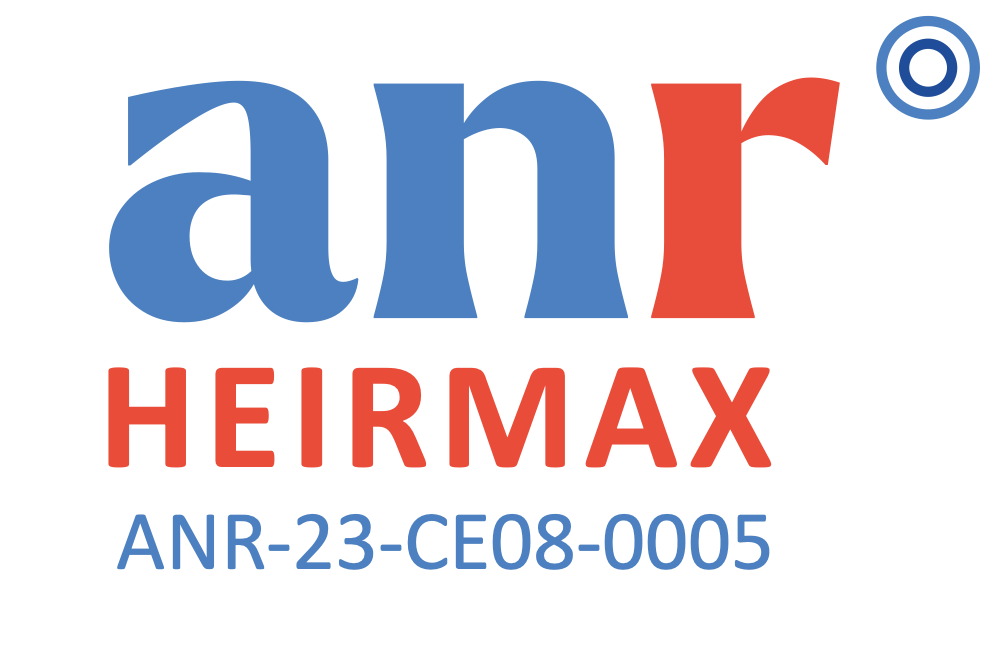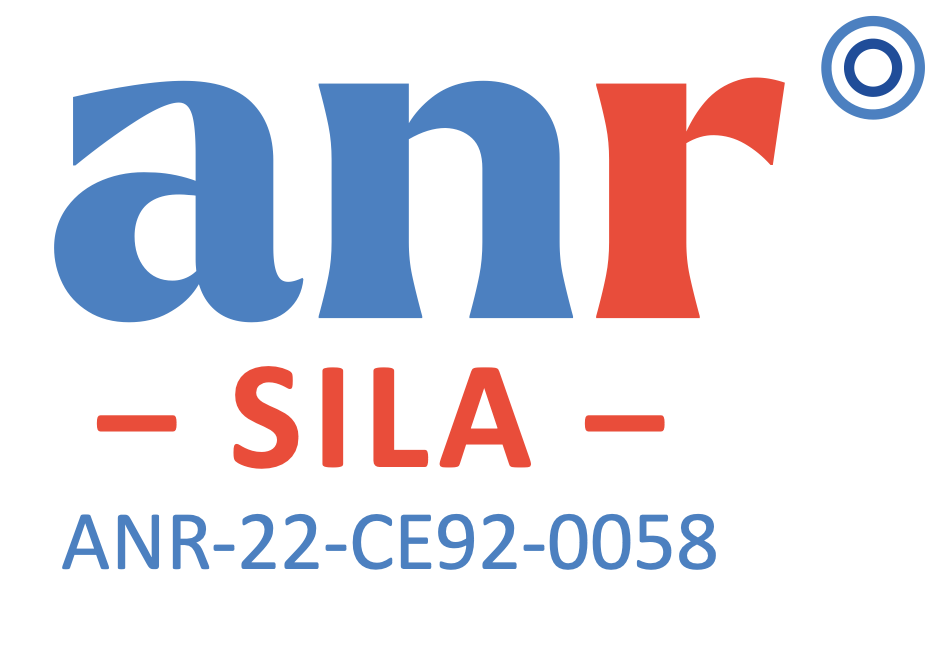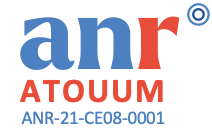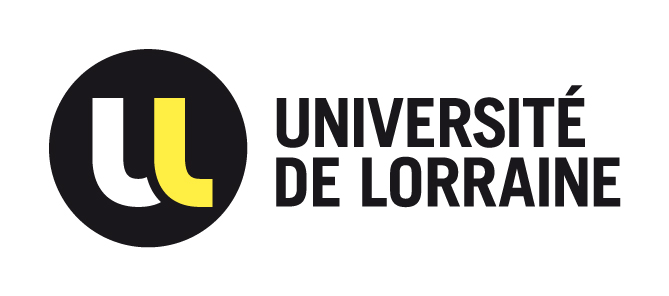 Cross-scale atomistic simulations for the plasticity in leightweigt complex alloys
Cross-scale atomistic simulations for the plasticity in leightweigt complex alloys
Duration: 11/2024 - 10/2025 (12 months)
Funding: 27 Mio core hours on the Joliot-Curie supercomputer, equivalent to 189,000 euros.
Funding type: Computational ressources awarded by the GENCI.
Project Coordination: Dr. Julien GUÉNOLÉ (LEM3).
Show abstract
Abstract: Increasing the strength while reducing the weight of metallic alloys is one of the most fascinating current challenge for material scientists and engineers. In particular, the propagation of plasticity through the microstructure of complex modern alloys is largely unknown. To date, most of the investigations of the fundamental mechanisms focuses on the plasticity at model interfaces, especially at model grain boundaries. Recently, thanks to the concurrent development of high-performance computing facilities and novel atomic interaction models, the atomistic details of interfacial plasticity in intermetallic materials start to be unveiled. In this project, we intend to investigate the fundamentals of interfacial plasticity at complex interfaces in metal-intermetallic alloys. The use of state of the art molecular statics and molecular dynamics, as well as experimentally informed atomistic simulations, will provide us crucial insights on the intrinsic properties of interphases, the interaction of dislocation(s) with the interface, the transfer of slips from one phase to the other, and the influence of the local chemical composition on all these mechanisms. This project is expected to build the foundation for an advanced communication with continuum mechanics approaches, especially discrete and non-local approaches of the plasticity.
 HEIRMAX - Development of High Entropy, Irradiation Resistant MAX Phases
HEIRMAX - Development of High Entropy, Irradiation Resistant MAX Phases
[Description of HEIRMAX by the French Research Agency ANR - Project number ANR-23-CE08-0005)]
Duration: 01/2024 - 12/2028 (48 months)
Funding: 711,600 euros by the french agency for scientific research (ANR).
Funding type: ANR PRC (Projet de Recherche Collaborative)
Project Coordination: Dr. Bertrand RADIGUET (GPM).
Partners (4): IJCLab, GPM, LEM3, Pprime Institut P'.
Show abstract
Abstract: MAX phases are compounds with Mn+1AXn stoichiometry, where M is an early transition metal, A is an element of groups 12 to 16 and X is carbon or nitrogen. They have attracted a particular attention due to their combination of both metallic and ceramic properties. Several MAX phases also exhibit a good resistance to irradiation, a low neutron activation and in some cases, a good resistance to corrosion. This combination of properties makes the MAX phases good candidates for several nuclear applications such as core structures of Gen IV reactors and also as zircaloy coating for enhanced accident tolerant fuel in pressurized water reactors.
However, their microstructure tends to evolve under irradiation. It results in a degradation of their mechanical properties. By tuning the composition of MAX phases and tending toward more complex composition, one can expect High Entropy (HE)-MAX phases (3 to 5 elements are used for M or A constituents) combining expected properties for nuclear applications (mechanical damage and corrosion resistances) and improved stability under irradiation.
The main objective of this proposal is to design a HE-MAX phase and evaluate its irradiation resistance in comparison to conventional MAX phases. Both conventional and HE-MAX phases will be synthetized by Hot Isostatic Pressure and will be ion irradiated. The radiation tolerance will be assessed in terms of stability of the microstructure and mechanical properties. The microstructures will be investigated with complementary techniques to get chemical and crystalline information from nano- to meso-scales. Micro-mechanical tests will be performed to evaluate hardness and toughness evolution. In addition, the irradiation primary damage will be modelized by molecular dynamic.
A better understanding of radiation damage mechanisms and of microstructure-mechanical properties relationships; and the elaboration a dense and high purity bulk HE-MAX phase with improved properties are expected.
 SILA - Segregation at Interfaces in Lightweight Alloys towards Tailored Mechanical Properties
SILA - Segregation at Interfaces in Lightweight Alloys towards Tailored Mechanical Properties
[Description of SILA by the French Research Agency ANR - Project number ANR-22-CE92-0058]
[Description of SILA by the German Research Fundation DFG - Project number 505716422]
Duration: 01/2023 - 12/2026 (36 months)
Funding: 618,790 euros (ANR and DFG).
Participants (CNRS, Metz, France): Dr. Thiebaud RICHETON, Dr. Julien GUÉNOLÉ, Dr. Stéphane BERBENNI, Dr. Antoine GUITTON.
Participants (RWTH, Aachen, Germany): Dr.-Ing. Zhuocheng XIE, Dr.-Ing. Talal AL-SAMMAN.
Show abstract
Abstract: Greenhouse gas reductions and fuel efficiency associated with energy generation and transportation have led to increased interest in the development of lightweight alloys in recent years. Following this trend, sustainable materials involving recycling have become of crucial importance. Magnesium alloy is a major candidate to achieve this goal but suffers from poor ductility at ambient temperature, making the processing and forming challenging and costly and preventing widespread applications. Understanding the mechanisms of plasticity in such alloy containing desired and undesired solute elements is the necessary step towards the design of lightweight alloys with tailored mechanical properties.
The project SILA proposes to contribute to this challenge by the improvement and development of continuum models able to predict solute segregation at grain boundaries and its impact on mechanical properties, supported by experimental and atomistic results. A unique French-German collaboration between the LEM3 in Metz, the leader in the continuum modelling of mechanics and crystalline defects, and the IMM in Aachen, the leader in the experimental characterization of Mg alloys, proposes to employ atomistic simulations to bridge the gap between atomic-scale experiments and continuum models.
SILA will consider bi- and tri-crystals of Mg with Zn or Y solute elements. Atomic-scale experimental characterisation by atom probe tomography will be used to validate molecular statics/dynamics simulations of the segregated interfaces. The atomistic details of the simulations will feed novel continuum models based on the excess of interfacial free energy able to capture the chemo-mechanical processes at interfaces, including complex interactions between present defects at grain boundaries. Experimental and numerical nano-mechanical tests will explore the mechanical response of the Mg alloys, including the interaction with dislocations, and describe the role of solute segregation at interfaces.
SILA aims at an accurate, experiment-based, continuum description of grain boundaries with segregated elements, to improve constitutive models for strain-aged alloys. This is of prime importance for engineering alloys and recycled alloys whose segregated solutes at interfaces impact largely mechanical properties.

AtoUum - Atomistic fundamentals of plasticity at interfaces in lightweight complex alloys and transfer to continuum models
[ANR-21-CE08-0001]
Duration: 09/2021 - 08/2025 (48 months).
Funding: 231,049 euros by the french agency for scientific research (ANR).
Participants: Dr. Julien GUÉNOLÉ (Project coordinator), Dr. Vincent TAUPIN.
Show abstract
Abstract: Lightweights metallic materials with outstanding mechanical properties are of uttermost importance for the scientific and environmental challenges ahead. Such alloys commonly exhibit complex microstructures responsible for their peculiar mechanical behavior. The long-standing research question of the plastic deformation of materials and components is intrinsically related to the propagation of slip across interfaces such as grain boundaries or phase boundaries. Despite intense work, mechanisms of slip transfer remain to date fundamentally unclear. The primary objective of this project is to reveal the discrete features at the atomic scale associated with slip transfer in a representative selection of alloys, by using state-of-the-art atomistic simulations. This project will then identify and assess key parameters that can be transferred from our discrete approach to continuum models capable of considering dislocation-interface interactions at larger scale.
 Atomistic simulation and micromechanical modeling of chemo-mechanical couplings in the presence of crystal defects
Atomistic simulation and micromechanical modeling of chemo-mechanical couplings in the presence of crystal defects
Duration: 10/2022 - 09/2025 (35 months)
Funding: 110,000 euros by Université de Lorraine (French research ministry).
Participants: Dr. Thiebaud RICHETON, Dr. Julien GUÉNOLÉ, Dr. Stéphane BERBENNI.
Show abstract
Abstract: In this thesis, we propose to simulate the chemo-mechanical couplings in the presence of defects in one (dislocation) or two (grain boundary) dimensions. In particular, we wish to evaluate at the atomic scale the discrete effects of the presence of solute atoms on the excess energies and elastic fields of crystal defects. We will rely on molecular statics, nudge elastic band (NEB) [3,4] and molecular dynamics methods that allow the study of interactions between defects and interfaces. The continuous representation of these same effects with micromechanical approaches will be undertaken in parallel and the constitutive parameters of these approaches will be identified by the discrete methods mentioned above. The continuous approaches concerned by the project are the Stroh methods in 2D anisotropic elasticity, the Eshelby inclusion methods with the theory of eigenstrains or dipoles, and the thermodynamic method of Gibbs splitting surface to calculate the excess energy at grain boundaries but this time in the presence of solutes. These methods will be enriched and validated by discrete (atomistic) simulations.
Former research projects & fundings
PlaTra - Discrete Atomic Scale Characterization of Plasticity at Interfaces in Lightweight Complex Alloys and Transfer to Continuum Models: Defect Engineering for Energy Performance
Duration: 11/2021 - 10/2024 (36 months)
Funding: 110,000 euros by LabEx DAMAS and Région Grand-Est.
Participants: Dr. Vincent TAUPIN, Dr. Julien GUÉNOLÉ.
Show abstract
Abstract: Lightweight metallic materials with outstanding mechanical properties are of utmost importance for future scientific and environmental challenges. Despite intensive work, their deformation mechanisms remain fundamentally unclear to date. The main objective of this project is to develop defect engineering for energy performance by revealing the discrete characteristics of defects at the atomic scale in light metals, and to transfer this information to continuum models.
